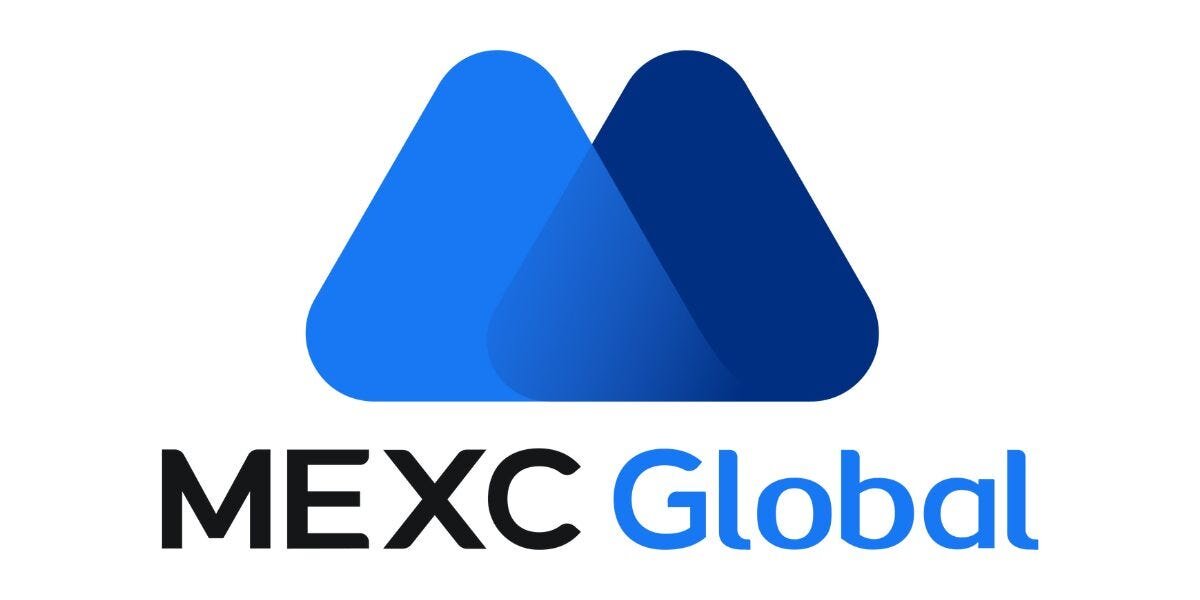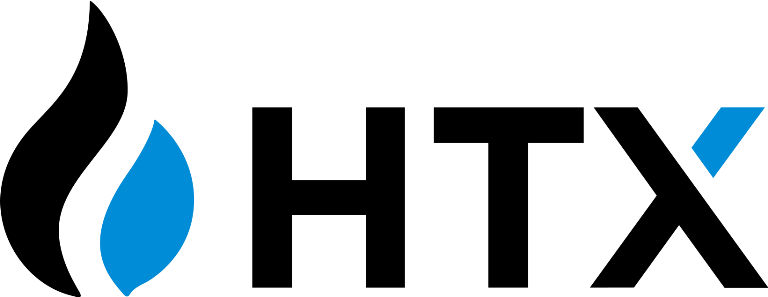⚓ Rating of TOP cryptocurrency exchanges 2025
Криптобиржа работает как посредник между людьми, которые хотят купить или продать криптовалюту за рубли. По сути, это цифровая площадка, где встречаются покупатели и продавцы — примерно как на обычном рынке, только для биткоинов и других цифровых монет.
Купить криптовалюту напрямую нельзя, потому что она существует в блокчейне — специальной системе, для работы с которой нужна техническая инфраструктура. Биржи как раз решают эту проблему: они подключены к блокчейну, сводят покупателей с продавцами и гарантируют безопасность обмена.
Существует два типа криптобирж. Централизованные (CEX) управляются компаниями, похожи на банки — требуют регистрации, но удобны в использовании. Децентрализованные (DEX) работают без центрального управления через смарт-контракты, но сложны для понимания.
Совет: Тем, кто только начинает покупать криптовалюту, подходят исключительно централизованные биржи — они проще и безопаснее.
Главные критерии: на что смотреть при выборе криптобиржи
Выбор криптобиржи начинается с Trust Score от CoinGecko — это своего рода паспорт надежности для любой торговой площадки. Система появилась в мае 2019 года после скандалов с накруткой объемов, когда выяснилось, что многие биржи просто рисуют цифры для попадания в топы. Trust Score работает как детектор лжи, проверяя семь ключевых компонентов: ликвидность получает максимум 4 балла, кибербезопасность — 2 балла, а остальные параметры вроде масштаба операций и прозрачности команды добавляют по 0.5-1 баллу.
Безопасная зона для новичков — это Trust Score от 8 до 10 баллов. На практике пользователи часто игнорируют этот показатель и выбирают площадки по рекламе или советам знакомых, а потом сталкиваются с проблемами вывода средств или техническими сбоями.
Важно: Биржи с Trust Score ниже 7 баллов могут иметь проблемы с ликвидностью или безопасностью — лучше обходить их стороной.
Второй маркер стабильности — попадание в топ-5 рейтинга мониторинга Exnode. Эта платформа exnode.ru собирает реальные данные о работе бирж: комиссии, ликвидность, техническую стабильность. Трейдеры на форумах часто отмечают, что биржи из топа Exnode действительно работают стабильнее и реже "лагают" в моменты высокой волатильности рынка.
При изучении структуры комиссий важно понимать разницу между мейкерами и тейкерами. Мейкеры создают ордера и обычно платят меньше — это стимулирует ликвидность. Тейкеры исполняют готовые ордера и платят больше. Многие новички не разбираются в этих нюансах и теряют деньги на неоптимальных сделках. Также стоит учитывать комиссии за вывод — они варьируются в зависимости от загруженности блокчейн-сетей.
Качество русскоязычного интерфейса часто становится камнем преткновения. Крупные международные биржи поддерживают русский язык, но качество перевода кардинально отличается. Некоторые платформы используют машинный перевод "для галочки", что приводит к путанице с терминами. Опытные пользователи рекомендуют протестировать интерфейс на демо-счете, прежде чем вносить реальные деньги.
Критически важный момент 2025 года — работа без VPN из России. После событий 2022 года ландшафт кардинально изменился. Многие международные платформы ввели географические блокировки, но ряд крупных бирж продолжают предоставлять полный функционал российским пользователям. Практика показывает, что использование VPN может привести к блокировке аккаунта при верификации, поэтому лучше сразу выбирать доступные площадки.
Безопасность: как не потерять деньги
Кража средств с криптобирж происходит регулярно — только в 2024-2025 годах хакеры украли миллиарды долларов. Большинство потерь случаются из-за базовых просчетов безопасности: один сотрудник кликает на вредоносную ссылку, и многомиллионные запасы оказываются под угрозой. Надежные платформы защищают клиентские деньги через двухфакторную аутентификацию, холодное хранение и шифрование данных.
Двухфакторная аутентификация (2FA) — это дополнительный код помимо пароля. В 99,9% случаев мошенники даже не пытаются взламывать аккаунты с включенной 2FA, поскольку это слишком ресурсозатратно. На практике пользователи часто ленятся настраивать защиту, а потом жалеют об этом после взлома.
Совет: SMS-коды легко перехватывают, поэтому лучше использовать приложения Google Authenticator или Authy.
Холодное хранение означает размещение криптовалют на устройствах без доступа к интернету. Серьезные биржи держат до 95-98% клиентских средств именно таким способом — Gate.io и Bybit используют мультиподписные адреса для дополнительной защиты. На горячих кошельках остается только 2-5% для ежедневных операций.
Система Proof of Reserves позволяет проверить — есть ли у биржи заявленные активы. OKX публикует отчеты с подтверждением 100% покрытия обязательств, используя криптографическую проверку. Пользователи могут убедиться в финансовой устойчивости платформы, при этом конфиденциальные данные остаются закрытыми.
Важно: В России криптострахование почти отсутствует из-за неопределенности регулирования.
Возраст платформы напрямую влияет на доверие. Молодые биржи чаще закрываются или оказываются мошенническими — статистика неумолима.
Лицензии от регуляторов дают дополнительные гарантии, хотя и не панацею. Для получения разрешений площадка должна соответствовать высоким стандартам предоставления услуг. Однако российские пользователи остаются без страховых гарантий, поэтому особенно важно выбирать проверенные временем платформы.
P2P-торговля: единственный способ для россиян
С февраля 2022 года покупка криптовалюты через P2P стала чуть ли не единственным доступным методом для россиян. Ограниченный доступ к централизованным биржам и отключение популярных платёжных систем вынудили пользователей искать альтернативные варианты обмена.
Говоря простым языком - это как "Авито" в мире крипты. Вы находите продавца или покупателя, договариваетесь об условиях, а платформа следит за безопасностью. Криптовалюта блокируется на специальном счёте (эскроу) до тех пор, пока продавец не подтвердит получение средств.
На практике россияне чаще всего пользуются картами Сбера, Т-Банка, МТС-банка. Особенно удобны мгновенные переводы через СБП - деньги поступают за секунды, что серьёзно ускоряет весь процесс.
Совет: P2P даёт возможность купить крипту напрямую между людьми, минуя посредников.
Большинство площадок работают без комиссии за P2P-операции - платформы зарабатывают на других услугах. Сделки обычно завершаются за 15-30 минут, хотя иногда может потребоваться до нескольких часов в зависимости от банковской системы.
Пользователи со стажем рекомендуют работать только с продавцами, у которых рейтинг от 98% и больше сотни завершённых сделок. Такие контрагенты практически не создают проблем и оперативно отвечают в чате.
Важно: Ежедневные объёмы P2P-торговли с участием россиян в 2025 году исчисляются сотнями миллионов долларов.
Нужна ли верификация: KYC для новичков
Что означает KYC? Аббревиатура расшифровывается как "знай своего клиента" — юридическое требование по проверке личности пользователей на платформах. В криптоиндустрии это обязательный процесс для предотвращения мошенничества и отмывания денег.
Биржи работают по-разному с верификацией. Платформы с опциональным KYC позволяют начать торговлю сразу после регистрации — достаточно подтвердить email или номер телефона. В то время как биржи с обязательной верификацией блокируют большинство функций до загрузки документов.
Какие ограничения без верификации? Лимиты существенно урезаны и сильно отличаются между платформами:
- Huobi ограничивает вывод до 1 BTC в сутки для неподтвержденных аккаунтов
- MEXC устанавливает лимит 20 BTC в день на вывод средств
- BingX разрешает выводить до 50 тысяч USDT ежедневно без документов
- KuCoin также ограничивает 1 BTC в сутки для неверифицированных клиентов
Какие документы нужны для KYC? Стандартный набор включает:
- Паспорт РФ или водительское удостоверение — основной документ
- Селфи с документом для сверки фотографии
- Справка о доходах или документ с адресом проживания — счет за коммуналку, банковская выписка
На практике процесс занимает разное время. Некоторые биржи проверяют документы за час, другие могут "тянуть" до двух рабочих дней. Система автоматически анализирует загруженные сканы через алгоритмы распознавания.
Преимущества торговли без верификации очевидны для новичков — можно сразу купить первую криптовалюту и изучить интерфейс биржи. Многие начинающие трейдеры используют именно такой подход: сначала "пощупать" рынок с небольшими суммами, а KYC проходить позже, когда потребуются большие лимиты или доступ к P2P.
Топ-5 лучших бирж для новичков из России
Bybit - платформа с высокой ликвидностью
Криптобиржа Bybit демонстрирует впечатляющие показатели - средний суточный объем торгов превышает $3,3 миллиарда. Площадка особенно привлекательна для российских новичков благодаря стабильной работе и русскоязычной поддержке.
Комиссии за спотовую торговлю фиксированы на уровне 0,1% за операцию. Bybit требует обязательную KYC-верификацию для полного функционала. Новички получают приветственный бонус до 50 USDT плюс демо-счет для тренировки.
Совет: По опыту пользователей, верификация на Bybit проходит быстрее других - обычно за несколько часов.
Gate.io - гибкая комиссионная структура
Gate.io выделяется уникальной системой комиссий. Биржа предлагает уникальную систему комиссий: мейкеры платят 0,02%, тейкеры - 0,05%. Интересная особенность - активные трейдеры, размещающие лимитные ордера, могут получать возврат комиссий как поставщики ликвидности.
У Gate.io есть лицензии в Гонконге, Италии, Гибралтаре и Литве. Поддерживает более 3800 токенов. Фактически это одна из немногих бирж, где VIP-статус действительно существенно снижает расходы - у пользователей высших уровней комиссии могут быть в разы меньше.
MEXC - торговля без документов
MEXC выделяется возможностью торговать без KYC-верификации. Площадка поддерживает более 1700 активов с нулевыми комиссиями для мейкеров на спотовой торговле.
Без верификации можно выводить до 30 BTC ежедневно. Если пройти базовую KYC, лимит увеличивается до 80 BTC в сутки. Однако жителям Крыма, ДНР и ЛНР доступ ограничен. Как показывает опыт, многие россияне выбирают MEXC именно из-за отсутствия обязательной верификации.
Важно: Базовая верификация на MEXC проходит в течение 24 часов и открывает доступ к P2P-торговле.
OKX - ограничения для рублевых операций
OKX предлагает развитую VIP-программу у где комиссии могут достигать 0,01% для тейкеров и -0,01% для мейкеров на максимальном уровне.
С 29 августа 2023 года OKX прекратила P2P-торговлю российским рублем, что серьезно осложняет пополнение для российских пользователей. В реальности это означает необходимость искать обходные пути через другие валюты. Торговля остальными валютами по-прежнему доступна.
Bitget - эволюция копитрейдинга
Bitget требует обязательную KYC-верификацию и располагает Фондом защиты $300 миллионов. Площадка специализируется на копитрейдинге с более чем 12,000 профессиональных трейдеров.
В конце 2023 года Bitget обновила систему фьючерсного копитрейдинга - теперь есть отдельный счет для копирования и новый режим интеллектуального распределения средств. Пользователи отмечают что это позволяет безопасно подписываться на нескольких элитных трейдеров одновременно. Работает во всех регионах России, кроме Крыма.
С чего начать прямо сейчас: первые шаги
Новичкам в криптовалютах стоит начать с Bybit — платформа работает с россиянами в 2025 году и предлагает русскоязычный интерфейс.
Протестируйте интерфейсы 2-3 платформ перед выбором — помимо Bybit изучите Gate.io и MEXC.
Совет: Торговцы рекомендуют начинать с 1000-5000 рублей для безопасного изучения функций без серьезных потерь.
После регистрации изучите обучающие материалы выбранной биржи. Практика показывает — трейдеры, прошедшие базовое обучение на платформе, делают меньше ошибок при первых сделках.













